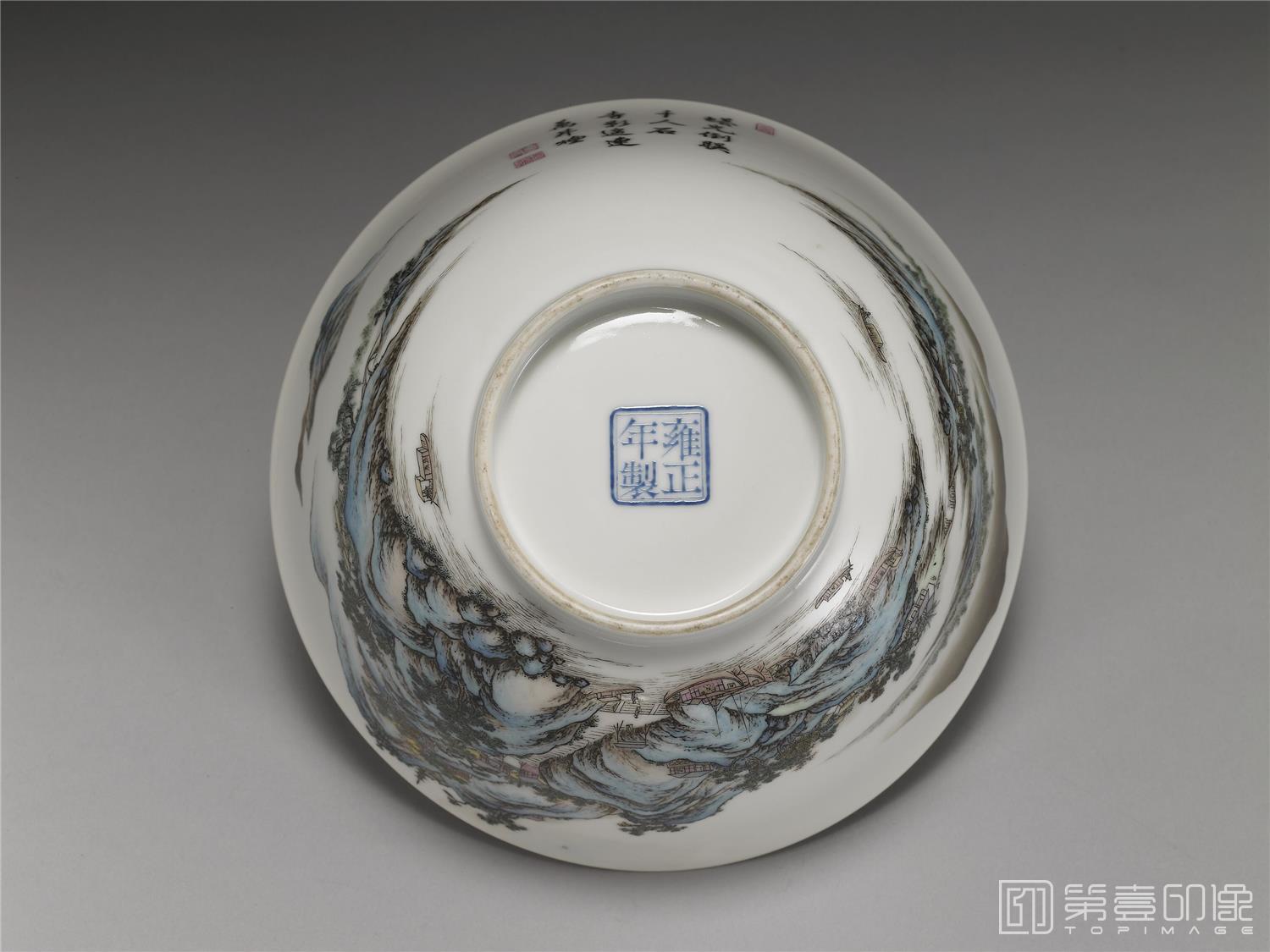

扫描二维码,加客服微信
圆口唇边,弧形深壁,矮圈足。胎骨较厚。内外施白釉,器表一面彩画山水风景,纹样细致讲究,山顶佛塔耸立,山脚屋宇节次,鱼舟鳞比。另一面墨书题写:「一轮瑞色明金万,万里清光入剑池」。引首画红料「寿如」印,句末为「德高」和「志远」两印。盌内无纹,足端无釉露胎。底有「雍正年制」蓝料款。 题句中的「剑池」点出以苏州虎丘山水入画的主题,由此可推知画中佛塔当为云岩寺塔。自汉朝《史记》以来,虎丘山水即有「吴中第一名胜」之称,民间口耳相传的历史,亦能与印文互为呼应,传达出雍正皇帝企求德寿与天齐的想法。传世一对,道光十五年(1815)干清宫《珐琅玻璃宜兴磁胎陈设档案》着录为「磁胎画珐琅虎邱景山水白地大碗壹对」。由于陈设档中的物件品名,均为原贮藏木匣上的题名。透过木匣配置于乾隆朝,能追溯出乾隆皇帝降旨整理收藏的经过。
On one side of this porcelain bowl is a landscape rendered in colors, the decoration exceptionally refined. On the other side are two lines of poetry, in front of which is painted a seal in red for "Longevity as wished," and afterwards are two seals for "Virtue aloft" and "Aspiration afar." The interior is undecorated, and the underside features a reign mark in blue that reads, "Made in the Yongzheng reign." The poetry mentions "Sword Pool," suggesting decoration dealing with a site in the Tiger Hill area of Suzhou. In turn, it points to the possibility that the pagoda in the landscape is at Cloud Cliff Temple. Since the Han dynasty, Tiger Hill has been known as the "Number One Scenic Site in Wu," referring to the Suzhou region. The fame and history of the place spread and was echoed in the arts, leading the Yongzheng emperor to seek lasting virtue comparable to the heavens. This bowl, made as one of a pair, appears in the 1835 court archives on displays as being in the Qianqing Palace.
评论列表(0)